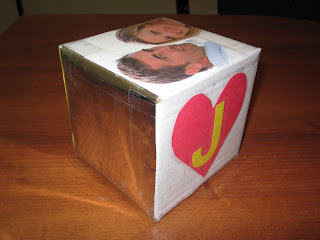Props are a fantastic addition to circle time. Stimulating thought and conversation, they can be a very positive and highly anticipated part of the daily routine.
Concrete objects are the gateway to learning and understanding for young children and should be used when presenting new concepts, themes and other information. Props, pictures, toys and sensory materials are essential tools for children's learning. Capture children's interest with these props and objects and encourage them to explore and experiment with many different materials.
With that said, apple picking season is here! Here is a rhyme with an accompanying prop that will help children develop their schema of apples, as well as numbers. The apples are made from red craft foam (cut using a
die cutter), large popsicle sticks, and hot glue...that's it!
 Here is a copy of the poem:5 Red Apples
Here is a copy of the poem:5 Red ApplesFive red apples sweet to the core;
One fell down and then there were four.
Four red apples sitting in a tree;
One fell down and then there were three.
Three red apples one for you, and you, and you;
One fell down and then there were two.
Two red apples shining in the sun;
One fell down and then there was one.
One red apple left all alone;
It fell down and then there were none.
Here is another version:Five Little ApplesFive little apples, not any more.(Count on fingers)
I give one to________(Child’s name)
And now there are four.
Four little apples are what I see
I give one to _____________,
And now there are three.
Three little apples for me and you.
I give one to_____________,
And now there are two.
Two little apples: oh, what fun!
I give one to ___________,
And now there is one.
One little apple, only one.
I give one to _________,
Now there are none.
Note: I would post the poem somewhere with the apples for your child to play with once you have said the rhyme with them multiple times. Also, after you have done the rhyme several times together, leave off the end of each line and allow your child to fill in the blank. This will help your child become a confident reader! Lastly, you don't need to make the apples - you can use your fingers on one of your hands if it's easier for you.
Do you have an apple song or poem to share?

























































